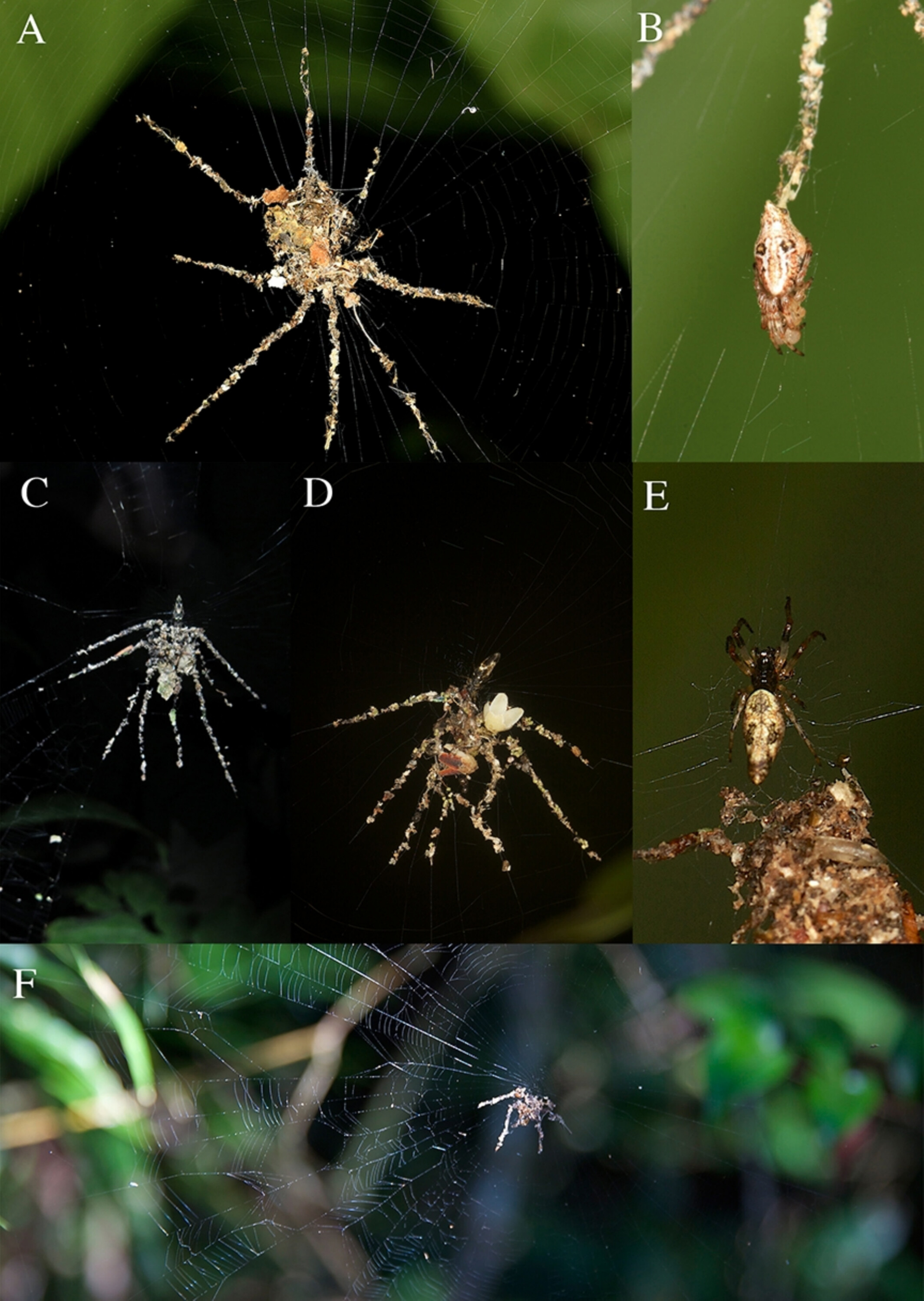Small tropical spiders in the Philippines and the Peruvian Amazon build giant arachnid-like decoys in their webs to ward off predators, a new study has found.
The oversized imitation spider is made of silk. plant remains. and dead, disembodied prey. While some decoys look rudimentary, others accurately mimic the shape of spiders, according to a study published Nov. 6 in the journal Ecology and Evolution.
you may like

watch on
“They don’t just decorate their webs, they meticulously arrange detritus, prey carcasses and threads to clearly resemble the silhouettes of larger, more menacing spiders than their own,” study lead author George Oller, a conservation geneticist at the Australian National University, said in a statement.
Unlike other orb weavers who create silken tubes and hide in their webs, the two Cyclosa spiders devote time, energy, and resources to crafting these decoys. This means the fake is more than just a strange biological observation, study co-author Lawrence Reeves, an assistant professor in the University of Florida’s Medical Entomology Laboratory, said in a statement.
“This points to a fundamental evolutionary trade-off in the spider world,” Reeves said.
Although researchers have known about the strange behavior of cyclosac spiders for some time, this study marks the first time that their decoy-making behavior has been formally documented and interpreted.
Oler said spiders turn their webs into “theaters of deception” to keep attackers at bay.
The decoy likely scares away birds, lizards, and other natural predators, encouraging them to stay away. It can also serve as camouflage for small cyclosac spiders, which have the same color as their own creations, allowing them to hide among plants and prey debris.

According to the study, the decoys may be as effective at protecting cyclosac spiders from predators as the hideouts made by other orb weavers, explaining why the spiders put so much energy into creating them. When a predator approaches the nest, the spider hidden inside the decoy vibrates its abdomen, causing the fake spider to vibrate and appear alive.
you may like
Spiders do this day and night, the researchers wrote in their study. “When approached further, the spider jumped from its web to the ground,” the researchers said, noting that it was observed several times in the Peruvian Amazon in 2022, adding that the arachnid returned to its nest once the perceived threat was gone.
Juan Carlos Yatto, a nature guide from Peru’s Tambopata National Reserve who collaborated with the study authors, said in a video that the decoys could provide a safe place for the cyclosac spider to lay its eggs. The spider moves the contents of its web to a new location by constructing a single thread, carrying along the thread the eggs and any debris or body parts used as decoys. In this scenario, the dismantled decoys could potentially camouflage the eggs during relocation, Yat said.
Other benefits of making decoys may be to attract prey and strengthen spider webs against bad weather, the researchers wrote in the study. More research is needed to understand these different benefits, Oler said.
The black widow spider and its strangely decorated nests are featured in the documentary series The Secret Lives of Animals.
Spider Quiz: Test your web of knowledge
Source link

